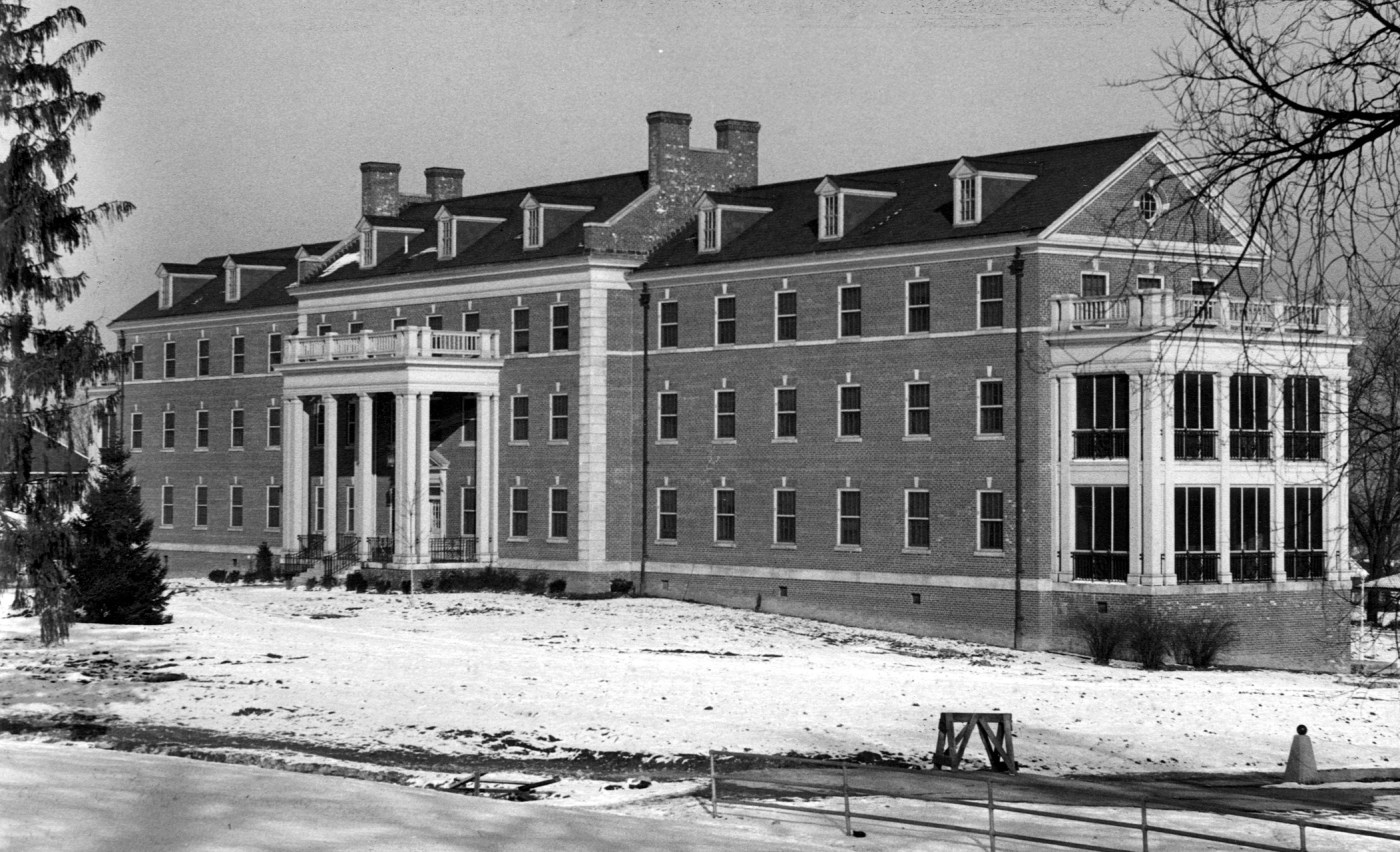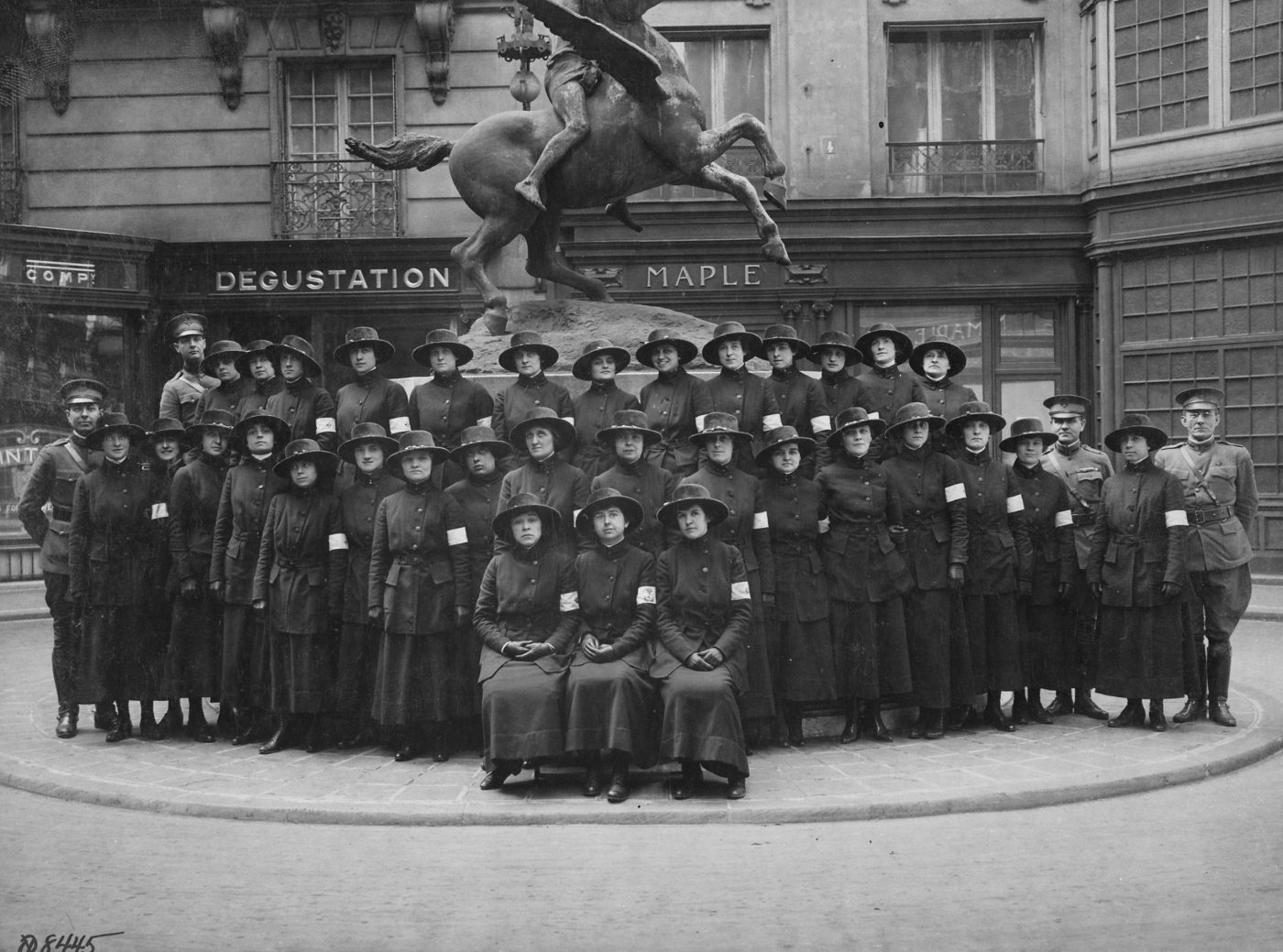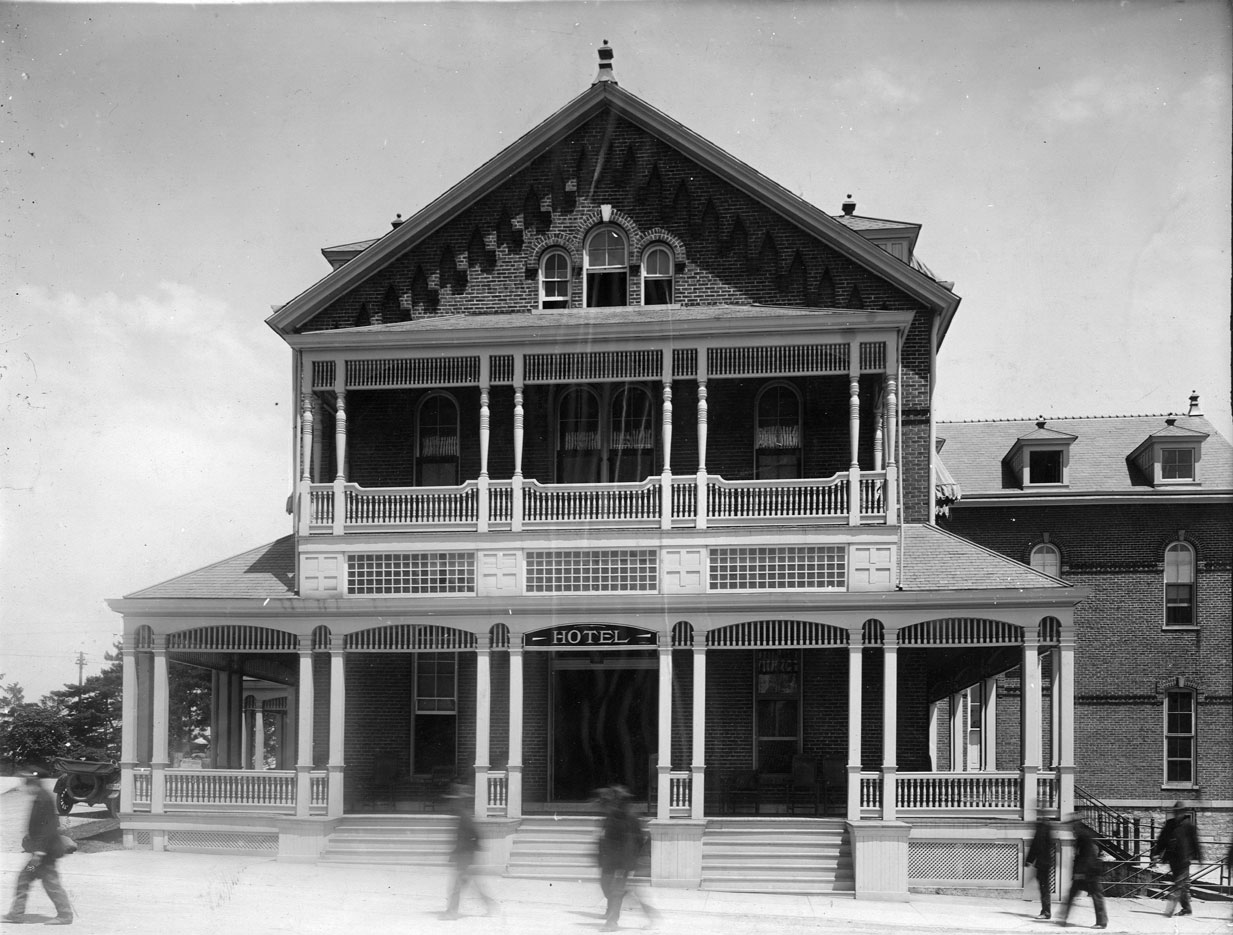
At the VA Medical Center in Dayton, Ohio, Miller Cottage stands as a mostly forgotten reminder of women’s fight for inclusion in the benefits and health care system for Veterans. This long, multi-story brick building with a white-columned portico originated as a barracks built specifically to house female Veterans on the grounds of what was then called the Central Branch of the National Home for Disabled Volunteer Soldiers (NHDVS). The establishment of the residence represented a rare victory for the female Veterans of the First World War in their quest to obtain government support for all uniformed women who served and sacrificed during that conflict.
Much of the credit for the creation of Miller Cottage belongs to the Women’s Overseas Service League (WOSL). Founded in 1921, the WOSL united women who had served overseas in any capacity during World War I. Much like other Veterans organizations of that era, such as the American Legion, the League aimed to provide community and support for Veterans. But WOSL members quickly found another mission they needed to undertake unique to their gender: advocating on behalf of both recognized and unrecognized female Veterans.
While World War I created new opportunities for women, it also produced new challenges afterwards. During the war, the U.S. military needed the services of women with special skills such as nursing, physical and occupational therapy, and telephone switchboard operations. Clerical workers were also critical to the war effort. For the first time in U.S. history, women were permitted to enlist in the armed forces thanks to a loophole in the law that allowed them to join the U.S. Navy as Navy Yeoman (F) and the U.S. Marine Corps as female Marines (two women also joined the U.S. Coast Guard).
These women, along with those who served in the Army and Navy Nurse Corps, were the only women eligible for Veterans benefits after the war. All of the rest, including the U.S. Army Signal Corps’ telephone operators known as the Hello Girls, the physical and operational therapists who worked as Army reconstruction aides, and numerous other women who had filled critical positions, often while in uniform and under oath, were denied access to government benefits and services.
Unbeknownst to many of them during the war, they had actually served in a civilian status, which meant they were not entitled to the benefits extended to male Veterans. As the leading organization representing female Veterans, the WOSL made the plight of these unrecognized Veterans a major part of its mission and members did whatever they could to advocate for the women left behind by the government.

Simultaneously, WOSL members committed much of their time to assisting the population of women who were officially recognized as Veterans by the government. These female Veterans often fell through the cracks of a system that was unprepared and ill-equipped to serve them. The WOSL advocated on behalf of these women and pressured the government into providing them with the benefits and medical care they deserved. Foremost among these efforts was the WOSL’s successful lobbying campaign to allow women Veterans to receive care at two branches of the NHDVS system in September 1923.
Due in large part to the WOSL, women were admitted into a special wing of the tuberculosis hospital at the National Home in Milwaukee, Wisconsin, and to the barracks reserved for their use on the Danville, Illinois, campus. Both the national leadership of the WOSL and its many local units aided the women who resided at Danville, but the facilities proved inadequate. In March 1931, the residents moved to the National Home in Dayton, Ohio.

In Dayton, the women initially lived in two separate buildings. Those with more severe health issues stayed in a hospital annex, while healthier women took up residence in a former hotel known as Miller Cottage. The building was named for Emma L. Miller, a Civil War widow who dedicated much of her life to public service, serving for decades as matron of the Dayton home and then superintendent of the general depot supplying all of the branches in the NHDVS system.
The move to Dayton improved the quality of life for the female Veterans. Each woman could have her own room and those in better health could travel into town by trolley car, unlike at the more isolated Danville location. After securing the admission of these women to the Dayton home, WOSL members continued to look after their welfare. They even appointed a chairwoman to organize service projects specifically for the Dayton residents.
The committee subscribed to magazines, sent the women games and puzzles, and provided materials for them to make hooked rugs and knitted items which they could sell to earn pocket money. Through an “adoption program,” local WOSL units “adopted” women at the home who came from their geographic area, becoming their pen pals and long-distance friends. This initiative helped the residents maintain a sense of companionship beyond the Dayton campus.

The original Miller Cottage, quaint as it was, could not handle the growing number of new arrivals, especially after nurses from the Spanish-American War also gained entry to the Dayton campus. On January 31, 1938, a new Miller Cottage opened and replaced the original repurposed hotel, which was demolished. The $300,000 building had enough room for 83 women. These more spacious accommodations became critical in the 1940s and afterwards, as World War II created a new and much larger generation of official female Veterans.
In the years after World War II, Miller Cottage became a home for women from both world wars. In later decades, as VA shifted away from providing long-term domiciliary care, the building was converted to other purposes. However, it remains an important reminder of an era when women had to fight to create a space for themselves within a Veterans welfare system constructed to serve men.
By Allison Finkelstein, PhD,
Independent Historian and author of Forgotten Veterans, Invisible Memorials: How American Women Commemorated the Great War, 1917-1945
Share this story
Related Stories

History of VA in 100 Objects
Object 96: Postcard of Veterans Vocational School
In 1918, the government created the first nationwide vocational training system to help disabled Veterans acquire new occupational skills and find meaningful work. Over the next 10 years, more than 100,000 Veterans completed training programs in every field from agriculture and manufacturing to business and photography.

History of VA in 100 Objects
Object 95: 1840 Census of Pensioners
In a first, the 1840 census collected data on Veterans and widows receiving a pension from the federal government. The government published its findings in a stand-alone volume titled “A Census of Pensioners for Revolutionary or Military Services.”

History of VA in 100 Objects
Object 94: Southern Branch of the National Home
The Southern Branch of the National Home for Disabled Volunteer Soldiers opened in Hampton, Virginia, in late 1870. The circumstances surrounding the purchase of the property, however, prompted an investigation into the first president of the National Home’s Board of Managers, Benjamin Butler.



